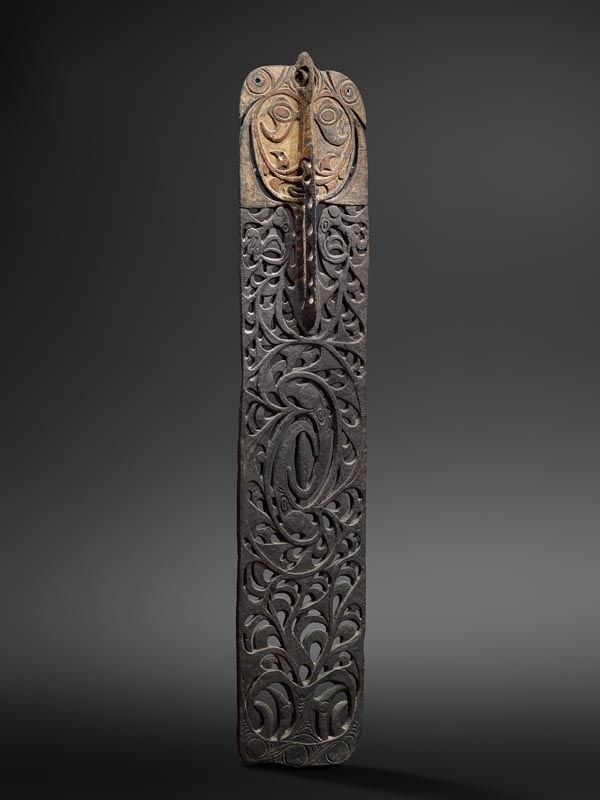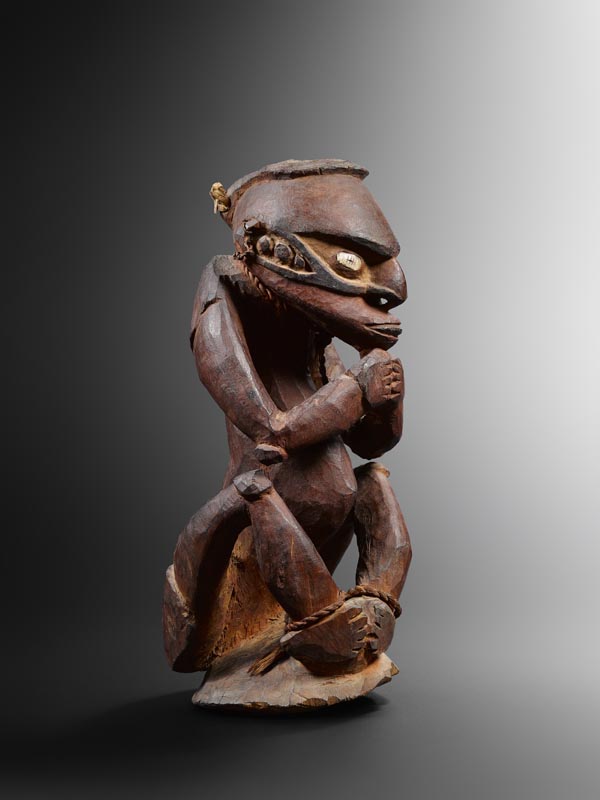Edited by Kevin Conru. 296 pages illustrating 170 objects from three private collections. Photographs by Hughes Dubois. Edition limited to 500 copies, €295. Conru Editions, released in May 2019. Review by Emilie Jolly
Sepik Ramu Art celebrates the broad diversity of art productions from the plain of the Sepik and Ramu rivers. This volume, edited by Kevin Conru, illustrates about two hundred artworks from three important European private collections. The objects, brilliantly photographed by Hughes Dubois, were for the most part collected before WWI, and reflect the Northern European collecting approach at that time with its predilection for fine small artefacts. The majority came from in the region of the lower Sepik and Ramu rivers, where most of the commercial activities were established.
The list of provenances includes prestigious museums such as the Linden Museum in Stuttgart, the Ethnologisches Museum in Berlin, the Rautenstrauch Joest Museum in Cologne, and the Liverpool Museum. A number of the works presented derive from the collections of German and Dutch Catholic congregations (such as the Society of the Divine Word) gathered by their mission stations. Others were collected by early visitors and residents in the region, such as gold prospector Ernst Tappenbeck, Wilhelm Häberle of the Neuguinea-Kompagnie, and the German-era Governor, Albert Hahl. The majority of the artefacts passed through the hands of renowned mid-twentieth-century dealers and collectors including Ludwig Bretschneider, Munich; Boris Kegel-Konietzko, Hamburg; Arthur Speyer, Berlin; Philip Goldman, London; and Matthias Lemaire, Amsterdam; or the collectors, Ernst Heinrich in Bad Cannstatt; Cornelius Meulendijk and Carel Groenevelt in Rotterdam, James Hooper in Arundel, Walter Bondy in Paris and Jef Vanderstraete in Lasne.

The book comprises three articles written by important scholars. In her essay Layers of Light: Twentieth-Century Photographs of Sculpture, Architecture, and the People of the Sepik River, Virginia-Lee Webb discusses early photographs taken in the area pointing out the significant role played by those remarkable documents in the growth of our understanding of the culture and environment of the Sepik Ramu. The second article Brag Masks and Kandimbong Figures: Two Sculptural Arts of the Sepik–Ramu Deltaby Crispin Howarth deals with wood carvings from the Murik Lakes. This study can enlighten our aesthetic appreciation of the art forms from other groups, as the Murik were key players in the cultural and art trade in the lower reaches of the two rivers. Barry Craig in his survey New Bends for an Old Riverexplores the cultural evolution and innovations within different communities of the Sepik Ramu resulting from environmental changes, population movements, consequent encounters and exchanges.

To mark the launch of this publication, Kevin Conru, in association with the German auction house Lempertz, curated an exhibition in its beautiful Brussels Art Nouveau’ premises. About one hundred of the book’s illustrated objects were exhibited from May 24 to June 28. The selection, chosen to illustrate the extraordinary diverse creativity of the Sepik Ramu peoples, included numerous important works of art, masks, food hooks, shields, ornaments, malu boards, charms and house posts, some in series, such as the four Biwat flute stoppers, and the four Angoram cult figures, which show the variety of artistic solutions within a corpus of works.


Table of Contents
- Introduction by Kevin Conru
- Virginia-Lee Webb | Layers of Light : Twentieth-Century Photographs of Sculpture, Architecture, and the People of the Sepik River
- Crispin Howarth | Brag Masks and Kandimbong Figures : Two Sculptural Arts of the Sepik-Ramu Delta
- Barry Craig | New Bends for an Old River
Available in the following book shops:
Vasco & Co – vascobooks.net/fr
Librairie Mazarine – www.lamazarine.fr
De Verre Volken/Ethnographic Art Books – www.ethnographicartbooks.com



